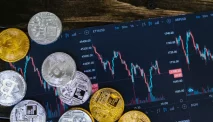Diksia.com - Cryptocurrencies have been a topic of immense interest and speculation in recent years.
With their promise of decentralized finance and potential for substantial returns, they have captivated the attention of investors and enthusiasts alike.
However, the crypto market is notorious for its volatility, and occasional downturns are an inherent part of its nature.
Lately, the market has experienced a notable decline, leaving many wondering why the crypto crash has occurred.
In this article, we delve into the factors influencing this recent downturn, shedding light on market dynamics, regulatory concerns, and investor sentiment.
Market Dynamics: Understanding the Volatility
The crypto market is highly susceptible to fluctuations due to various market dynamics. One crucial aspect is the speculative nature of cryptocurrencies.
Unlike traditional assets, cryptocurrencies lack a tangible underlying value, making their prices primarily driven by investor sentiment and market speculation.
This inherent volatility can trigger abrupt price swings, leading to significant gains or losses within short periods.
Additionally, the interconnectedness of cryptocurrencies plays a role. Bitcoin, being the largest and most influential cryptocurrency, often sets the tone for the entire market.
When Bitcoin experiences a decline, it tends to have a domino effect on other cryptocurrencies, causing a widespread market downturn.
Regulatory Concerns: Impact on Investor Confidence
Regulatory actions and concerns have a profound impact on the crypto market.
Governments and regulatory bodies worldwide have been grappling with how to manage cryptocurrencies effectively, given their decentralized nature and potential for illicit activities.
This has led to increased scrutiny, potential regulations, and policy changes, which can significantly affect investor confidence.
In recent months, various regulatory actions have emerged. Some countries have proposed or implemented stricter regulations, imposing limitations on crypto exchanges, banning certain activities, or increasing tax obligations.
Regulatory uncertainty and the fear of potential restrictions create a sense of unease among investors, leading to a decline in market demand.
Investor Sentiment: Emotions and Market Psychology
Investor sentiment plays a critical role in shaping the crypto market. The “fear of missing out” (FOMO) and the “fear, uncertainty, and doubt” (FUD) mentality can heavily influence market trends.
During periods of positive sentiment, when investors anticipate significant gains, demand surges, driving prices upward.
Conversely, during negative sentiment, characterized by fear and doubt, investors tend to sell off their holdings, causing prices to decline.
Recent events have contributed to a shift in investor sentiment. News of regulatory crackdowns, security breaches, or high-profile scams can trigger panic and prompt investors to sell off their cryptocurrencies.
Moreover, the heightened media coverage surrounding crypto volatility can exacerbate negative sentiment, further amplifying the market decline.
Market Correction: Healthy Consolidation or Ominous Sign?
While the recent crypto crash may appear concerning, it is essential to consider the broader context.
Market corrections are a natural part of any investment landscape, and cryptocurrencies are no exception.
Such downturns can be seen as a healthy consolidation phase, bringing prices to more sustainable levels and filtering out speculative excesses.
Market corrections also offer an opportunity for long-term investors to enter the market at more favorable prices.
Historically, cryptocurrencies have displayed a pattern of recovering from significant declines and eventually reaching new all-time highs.
However, it is crucial to exercise caution and conduct thorough research before making investment decisions.
Looking Ahead: Factors That Could Influence the Market
As the crypto market recovers from the recent decline, several factors may shape its future trajectory. One such factor is institutional adoption.
The increasing interest and participation of institutional investors, such as hedge funds and banks, could bring stability and legitimacy to the market, potentially reducing volatility.
Another factor to watch is regulatory developments. Clarity in regulations can enhance investor confidence and attract more participants to the crypto space.
Governments’ efforts to strike a balance between protecting investors and fostering innovation will play a pivotal role in shaping the industry’s future.
Furthermore, technological advancements, such as scalability solutions and increased transaction speeds, could address some of the challenges faced by cryptocurrencies.
Improved infrastructure and user experience may drive broader adoption and propel the market forward.
Conclusion
The recent crypto crash can be attributed to a combination of market dynamics, regulatory concerns, and investor sentiment. Understanding the factors behind such downturns is crucial for investors and enthusiasts alike.
By comprehending the inherent volatility, regulatory landscape, and psychological aspects of the market, individuals can make more informed decisions and navigate the ever-evolving crypto landscape with greater confidence.
As the market recovers, it is essential to remain vigilant and keep an eye on the factors that may influence its future growth and stability.






